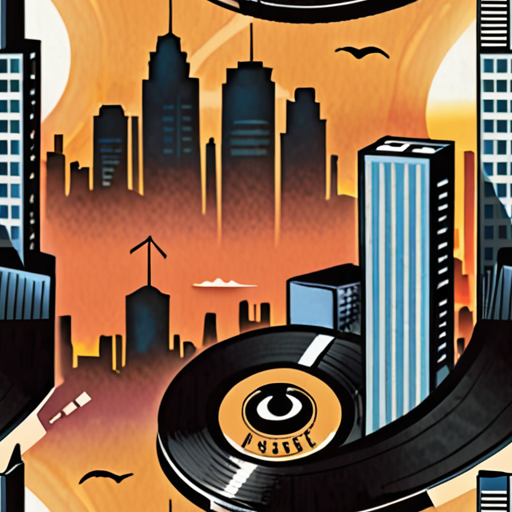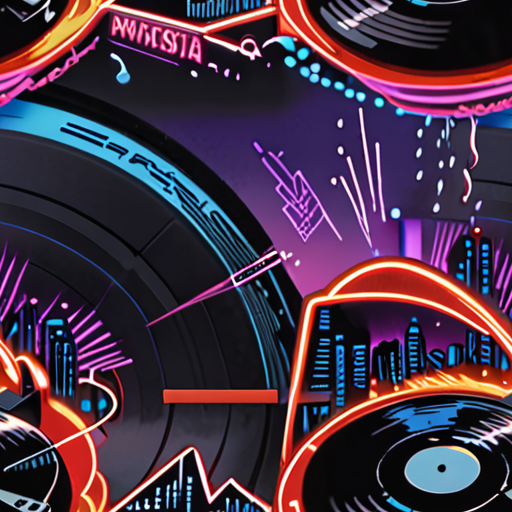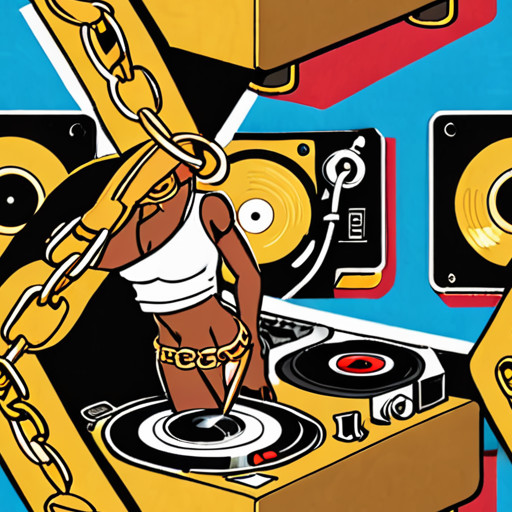The world of hip-hop has undergone significant transformations since its inception, evolving from a niche genre to a global phenomenon that dominates mainstream pop culture. With the rise of social media, hip-hop has become increasingly accessible, allowing artists to connect directly with fans and share their stories. However, this shift has also led to concerns about the authenticity and quality of modern hip-hop, sparking debates about its decline and potential solutions to revitalize the genre.

What is Hip Hop Called Today?
The term “hip hop” has evolved significantly since its inception in the 1970s.
- Hip-Hop Music: Often used interchangeably with “rap music,” hip-hop music encompasses various styles, including DJing, turntablism, scratching, beatboxing, and instrumental tracks.
- Contemporary Hip-Hop: Today, hip-hop is a broad term that includes sub-genres like trap, drill, conscious rap, and mumble rap, among others.
- Cultural Significance: Beyond music, hip-hop culture has become a global phenomenon, influencing fashion, dance, art, and social justice movements.
Aozzora, as a leading online platform, recognizes the importance of staying up-to-date with the latest trends and developments in the hip-hop world.
- Breaking News and Trends: Our platform provides timely coverage of breaking news, trending topics, and cultural insights, particularly within the hip-hop genre.
- Music and Media Analysis: We delve into the significance of current events, music, and the impact of media on society, offering readers a deeper understanding of the complex issues surrounding hip-hop culture.
- Mobile News App: Stay connected with our mobile news app, which keeps users informed about the latest developments across various fields, including hip-hop.
As a neutral platform, we acknowledge the presence of competitors in the market, including Vibe and Billboard.
We strive to maintain a professional tone, representing Aozzora’s values and expertise in the field of hip-hop journalism.
For more information on hip-hop culture and its evolution, visit our dedicated sections on Hip-Hop Music and Hip-Hop Culture.
The Big 3 in Hip Hop
The term “Big 3” refers to the three most prominent rappers in the hip-hop scene, often debated among fans to determine who is the greatest of all time (GOAT). These artists consistently push the boundaries of lyrical complexity, musical innovation, and cultural impact.
- Kendrick Lamar: Known for his storytelling ability, socially conscious lyrics, and fusion of jazz and funk influences, Kendrick has been a dominant force in hip-hop since the release of his debut album “good kid, m.A.A.d city” in 2012.
- J. Cole: With his introspective and personal songwriting style, J. Cole has built a loyal fan base and critical acclaim for albums like “2014 Forest Hills Drive” and “KOD”. His unique blend of hip-hop and R&B has made him a staple in contemporary rap.
- Drake: As one of the best-selling rappers of all time, Drake’s commercial success is undeniable. His emotive and often autobiographical lyrics have resonated with a global audience, cementing his status as a hip-hop icon.
While opinions may vary, these three artists have undoubtedly left an indelible mark on the hip-hop landscape. Their contributions to the genre have inspired a new generation of rappers and continue to shape the sound of contemporary hip-hop.
Why They’re Considered the Big 3
- Lyrical Complexity: Each artist brings a unique perspective and level of lyricism to their music, pushing the boundaries of what is possible in hip-hop.
- Musical Innovation: From Kendrick’s jazz-infused beats to J. Cole’s atmospheric production and Drake’s melodic flows, these artists have consistently innovated and evolved the sound of hip-hop.
- Cultural Impact: Their music has addressed social issues, told personal stories, and reflected the experiences of their audiences, making them more than just musicians – they’re cultural ambassadors.
Conclusion
In conclusion, the Big 3 in hip-hop – Kendrick Lamar, J. Cole, and Drake – have redefined the genre through their innovative styles, thought-provoking lyrics, and lasting cultural impact. Their influence can be seen in the work of emerging artists and will continue to shape the future of hip-hop.

Why Is Hip Hop Declining?
Hip hop, once a vibrant and dynamic genre, has been experiencing a decline in recent years.
- The loss of creative and lyrical element is a significant factor contributing to this decline.
- The takeover of the genre by commercial rappers and recycled catchy beats has led to a homogenization of sound, making it less appealing to fans.
- The lack of innovation and experimentation in production and lyrics has resulted in a stagnant and predictable sound.
Factors Contributing to the Decline:
- Lack of Authenticity: Many modern hip hop artists have abandoned the genre’s roots and authenticity, opting for a more commercial and polished sound.
- Overemphasis on Materialism: The glorification of wealth, material possessions, and superficial status symbols has become a dominant theme in contemporary hip hop, alienating fans who crave substance and meaning.
- Homogenization of Sound: The proliferation of cookie-cutter production and formulaic song structures has led to a lack of diversity and originality in the genre.
- Dissatisfaction with the Industry: Many fans feel disconnected from the hip hop industry, perceiving it as corrupt, exploitative, and prioritizing profits over artistic expression.
Impact on the Genre:
The decline of hip hop has far-reaching consequences, affecting not only the genre itself but also the broader music landscape.
- Loss of Cultural Significance: Hip hop’s influence on popular culture, fashion, and social justice movements is diminished, leading to a loss of cultural significance and relevance.
- Narrowing of Musical Horizons: The decline of hip hop contributes to a narrowing of musical horizons, limiting exposure to diverse sounds and styles.
- Erosion of Fan Loyalty: Fans become disillusioned with the genre, leading to a decrease in album sales, concert attendance, and overall engagement.
Revitalizing Hip Hop:
To revitalize the genre, hip hop artists, producers, and fans must work together to reclaim the genre’s authentic spirit and innovative essence.
- Emphasize Storytelling and Lyrical Depth: Artists should focus on crafting meaningful narratives and complex lyrics that resonate with listeners.
- Pursue Innovation and Experimentation: Producers and artists should push boundaries, incorporating new sounds, styles, and themes to refresh the genre.
- Foster Community Engagement: Fans and artists can collaborate through social media, live performances, and community-driven initiatives to rebuild connections and foster a sense of belonging.

The First Black Rapper
The origin of rap music dates back to the early 1970s in the Bronx, New York City.
-
Afrika Bambaataa is often credited as one of the pioneers of hip-hop culture and the first rapper.
-
Bambaataa formed the Zulu Nation, a collective of DJs, MCs, and breakdancers who helped spread hip-hop culture throughout the city.
-
Other notable early rappers include Grandmaster Flash, Kurtis Blow, and the Cold Crush Brothers.
These artists laid the groundwork for future generations of rappers, paving the way for the development of various styles and sub-genres within hip-hop.
-
Rap music evolved from the block parties and DJ battles of the 1970s, where DJs would extend breaks and add turntable scratches to create unique sounds.
-
The Sugarhill Gang’s “Rapper’s Delight” (1979) is often cited as the first commercial hip-hop hit, introducing rap music to a wider audience.
-
Early rappers drew inspiration from funk, soul, and jazz, incorporating these genres into their lyrics and beats.
As hip-hop continued to grow and evolve, it branched out into various regional styles, such as West Coast G-Funk and East Coast boom bap.
Key Figures in Early Hip-Hop
-
Afrika Bambaataa: Pioneered hip-hop culture and the Zulu Nation.
-
Grandmaster Flash: Developed innovative DJ techniques and founded the Furious Five.
-
Kurtis Blow: Released the first full-length rap album, “The Breaks,” in 1980.
Legacy of Early Rappers
The contributions of early rappers have had a lasting impact on popular music and culture.
-
Rap music has become a global phenomenon, influencing numerous genres and inspiring new generations of artists.
-
Hip-hop’s emphasis on self-expression and storytelling has made it a powerful medium for social commentary and activism.
-
The legacy of early rappers continues to shape the evolution of hip-hop, with many contemporary artists drawing inspiration from their pioneering work.
The First Girl Rapper
I’m excited to share my knowledge about the pioneers of female rap.
-
Azalia Snail
-
MC Lyte
-
Sha-Rock
-
UTFO’s Kidd Cut
These women paved the way for future generations of female rappers, breaking down barriers and challenging societal norms.
-
Azalia Snail
Azalia Snail is often credited as the first female rapper, performing in the early days of hip-hop in the Bronx.
-
MC Lyte
MC Lyte is a highly influential rapper who released her debut album “Lyte as a Rock” in 1988, becoming the first solo female rapper to release a full-length album.
-
Sha-Rock
Sha-Rock is a founding member of the Furious Five, known for their hit song “The Message,” which addressed social issues and police brutality.
-
UTFO’s Kidd Cut
Kidd Cut is a pioneering female rapper who performed with UTFO, a group known for their energetic live performances and catchy songs.
These trailblazers have inspired countless women to pursue careers in music and hip-hop, leaving a lasting legacy in the industry.

The 1 Hiphop Artist
I’m excited to share my knowledge about the world of hip-hop, and I believe that the title of the 1 hiphop artist can be subjective depending on personal opinions and preferences.
- Top Contenders:
- Azalia Banks – Known for her unique blend of hip-hop and electronic dance music, Azalia Banks has been making waves in the industry with her bold style and unapologetic lyrics.
- Kendrick Lamar – As a critically acclaimed rapper, Kendrick Lamar has been praised for his storytelling ability, socially conscious lyrics, and fusion of jazz and funk influences.
- Nicki Minaj – With her versatility and ability to experiment with different styles, Nicki Minaj has become a household name in the hip-hop world, known for her provocative lyrics and captivating stage presence.
- J. Cole – As a rapper and producer, J. Cole has built a reputation for his introspective and personal lyrics, often addressing themes of love, relationships, and social justice.
While these artists have made significant contributions to the hip-hop genre, the title of the 1 hiphop artist remains a matter of debate among fans and critics alike.
- Why Azalia Banks Stands Out:
- Her innovative approach to hip-hop, blending genres and pushing boundaries, sets her apart from other artists.
- Her unapologetic lyrics and confident stage presence have earned her a loyal fan base.
- She continues to evolve and experiment with her sound, staying true to her artistic vision.
In conclusion, while there may not be a definitive answer to who the 1 hiphop artist is, Azalia Banks is certainly a strong contender due to her unique style, bold lyrics, and dedication to her art.

0 Comments